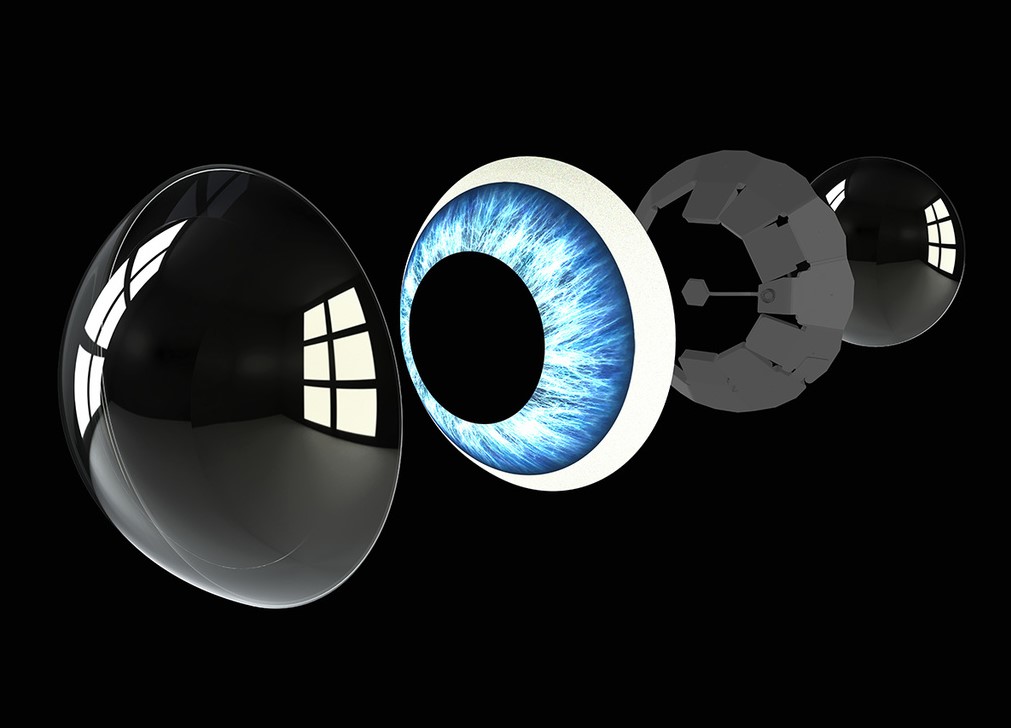Lenses - The future of AR?
For many years it has been a vision, something found in Sci-Fi stories and far from reality. But things have changed and the first smart contact lens for Augmented Reality is here. It has been developed by Mojo Vision and was shown at CES 2020 last month.
Smart lenses - a reality
The lens has some way to go before being market-ready but it has a microdisplay, image and motion sensors and wireless radio. The lens will eventually support eye-tracking and be powered by a built-in battery, but so far it is powered wirelessly and the pack that carries the battery also contains sensor data handling which sends information to the display.
 Illustrated exploded view of the Mojo lens
Illustrated exploded view of the Mojo lens
The company sees its lens as a way of getting people to look away from their phones and back onto the world around them. Although, in the beginning, it will likely be focused on people with low vision supporting them with edge detection in real-time and thereby provide lines around objects, people and their facial expressions, to enhance the information located in the users’ surroundings.
Application and use of smart lenses
So it appears smart lenses might become reality, and not to far stretched into the future. But what do we actually want to be able to do when we have them? And how would we interact with them?
There are many visions of how our whole world would change if we could merge the physical and the digital spaces. So far we have started light and most AR is generated through our phones with apps such as Ikea Place and Pokemon Go. But would these be something we would like to incorporate into our lenses? Do they affect our day to day lives in such a manner that smart lenses would be benefited by them? Probably not.
“When you close your eyes, you still see the content displayed” - Steve Sinclair, Product and Marketing at Mojo Vision
Things that you actually would want to do is control your other technical and electrical devices in your surroundings, such as turn on/off lights, control your tv (no, we do not think it will be replaced any time soon) and interact with your refrigerator. The lenses can assist in presenting information that you request at any time and any place, but how do we map it onto the world around us so that our mental presence is not completely eaten up by the digital possibilities and the physical is forgotten? This might be the biggest challenge for the future of smart lens developers.
When considering what Mojo Vision Steve Sinclair says, “When you close your eyes, you still see the content displayed” we have to figure out if this is something that we want or something that the producers of smart lenses will have to take away. After all, technology should support humans - not become intrusive in our most private spaces.
